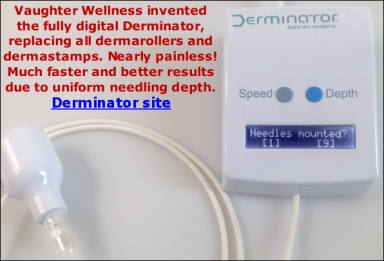A 1.5 mm dermastamp is a very good choice for acne scars.
Many of our customers improved their acne scars with dermarolling/stamping but not many were successful in reducing the pore size. Pores are not scars, pores are ducts in the skin and there is currently no method that can reliably and permanently reduce them. Dermarolling however often helped normalize acne prone skin and post-acne pigmentations.
Try a 0.5 mm regular dermaroller for pores on the cheeks and for acne spots issues. Roll 2-3 times a week.
For blackheads, try this:
https://http://forums.owndoc.com/dermarolling-microneedling/Oil-cleansing-method-to-get-rid-of-blackheads An example of successful pore reduction:
https://http://forums.owndoc.com/dermarolling-microneedling/Needling-and-dermastamp Your questions:
1. I will paste here my answer to another customer with the same problem:
Whenever I receive a question about scars on the nose, I get nervous.. The problem is, that the skin on the nose reacts very unpredictably comparing to the rest of the skin. Nasal skin can heal worse than you started with. There is no fat layer under that skin, there is only cartilage and that might be the reason.
I can only suggest this: Use the single needle on it but do not do any aggressive needling. Concerning the nose, ignore the guidelines for needling that are on our website. Make just three pricks into your scar (into the bottom of the scar, not into the edges).
If it heals well, make four pricks the next time. If it heals well, make five pricks the next time. Continue like this but never do aggressive, dense needling. Just a few very gentle pricks.
You can replace the single needle with a 1.5 mm dermastamp (using a dermastamp on the nose is probably easier) but the same rule applies. Start slowly and never dermastamp aggressively. Do a test patch first.
2. Use only a moisturizer after dermastamping. A day after, you can go back to your normal skin routine but keep the area moisturized.





